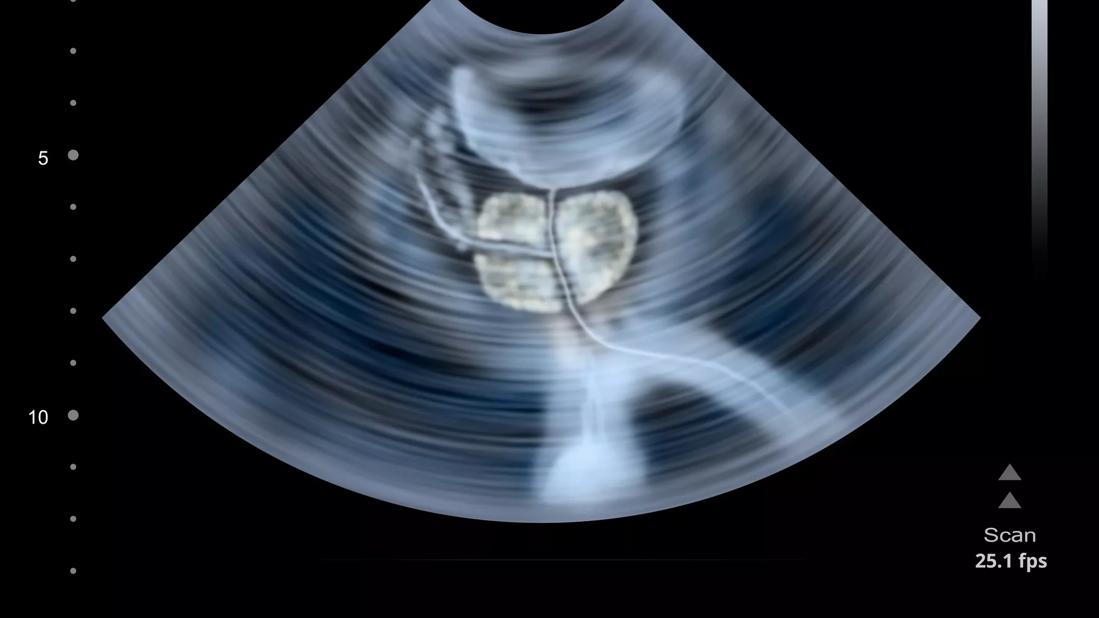A roundup of Cleveland Clinic-led initiatives

Experts at Cleveland Clinic have invested in research and technology designed to improve outcomes and the patient experience. From diagnosis and biopsy to surgical approaches and longer-term management—learn more about how the team is leading the way in prostate cancer.
Advertisement
Cleveland Clinic is a non-profit academic medical center. Advertising on our site helps support our mission. We do not endorse non-Cleveland Clinic products or services. Policy
Most prostate cancers are discovered through PSA-based screening. However, the test has several shortcomings. For example, it is not prostate-cancer specific; an elevated PSA is often caused by benign prostate hyperplasia.
Cleveland Clinic partnered with Cleveland Diagnostics to develop a blood test that detects and measures PSA-related proteins in the blood. The test, called IsoPSA, is more accurate in predicting high-grade prostate cancer, potentially reducing unnecessary biopsy.
Use of MRI in performing prostate biopsy allows precise targeting of areas of concern where cancer is most likely to be present. In the past, these biopsies were generally done transrectally, which is uncomfortable for patients and carries a finite risk of bacteremia and infection.
Cleveland Clinic urologists have found that passing the needle through the perineum is more accurate, carries a negligible risk of infection and can be done under local anesthesia, sedation or general anesthesia. Importantly, patients report no discomfort.
“Transperineal biopsies require dedicated equipment, special expertise and some experience, but I think the whole field will move this way in the next few years,” says Eric Klein, MD, urologic oncologist and Chairman Emeritus of the Glickman Urological & Kidney Institute.
“We have preliminarily shown that micro ultrasound is as effective as MRI at finding high-grade cancers, and it may be better than MRI at finding tumors,” says Dr. Klein. “In the future, it may be possible to obtain an accurate prostate biopsy without MRI.”
Advertisement
Cleveland Clinic helped to develop several assays that use high-end genomic technology to identify which men may be good candidates for active surveillance, and who needs closer follow-up, early re-biopsy or immediate treatment. These tests allow assessment of tumor aggressiveness that is not visible using standard microscopes and serve as adjuncts to routine pathologic assessment.
Cleveland Clinic is one of the first sites in the country to offer an improved form of high-intensity focused ultrasound (HIFU) using Focal One. The technology combines imaging and ablative techniques to target prostate tumors in a short, noninvasive outpatient procedure performed under MRI guidance. Unlike radical prostatectomy and radiation therapy, HIFU does not increase the risk for urinary or fecal incontinence. Since only part of the prostate is treated, it is better able to preserve potency. Patients return to normal activities in a few days.
At this time, HIFU is reserved for patients with a single tumor that is easily visible on MRI and located in a favorable anatomic position.
Robotic radical prostatectomy at Cleveland Clinic can be done through a single incision using a single-port robot. Performing the procedure extraperitoneally avoids bowel-related complications and adverse events that can occur during surgery, including optical nerve edema, congestion and respiratory problems. In select patients, this approach has become an outpatient procedure with minimal need for opioids for pain.
For guidance on how to have a conversation about these topics, including PSA testing with your patients, read the May 8 editorial in JAMA Oncology by Cleveland Clinic’s Michael W. Kattan, PhD, Chairman of the Department of Quantitative Services, and Anita D. Misra-Hebert, MD, MPH, from the Department of Internal Medicine.
Advertisement
Advertisement
Advertisement

Pediatric urologists lead quality improvement initiative, author systemwide guideline

Fixed-dose single-pill combinations and future therapies

Reproductive urologists publish a contemporary review to guide practice

Two recent cases show favorable pain and cosmesis outcomes

Meta-analysis assesses outcomes in adolescent age vs. mid-adulthood

Proteinuria reduction remains the most important treatment target.

IgA nephropathy is a relatively common autoimmune glomerular disease that can be diagnosed only by biopsy

Oncologic and functional outcomes are promising, but selection is key